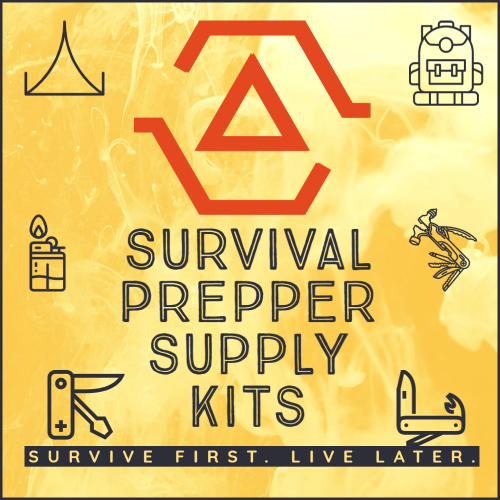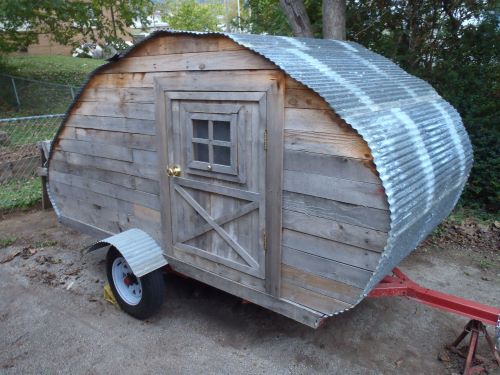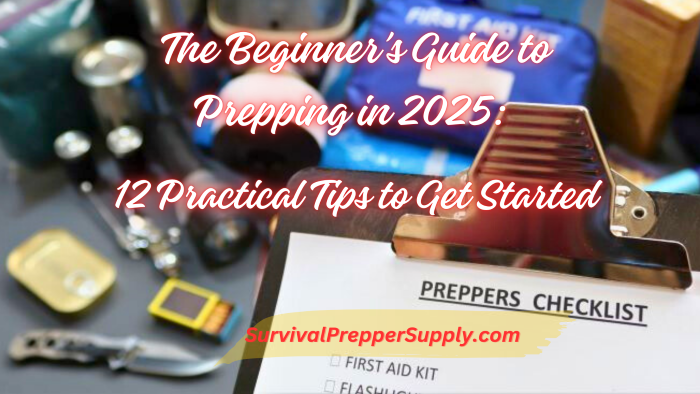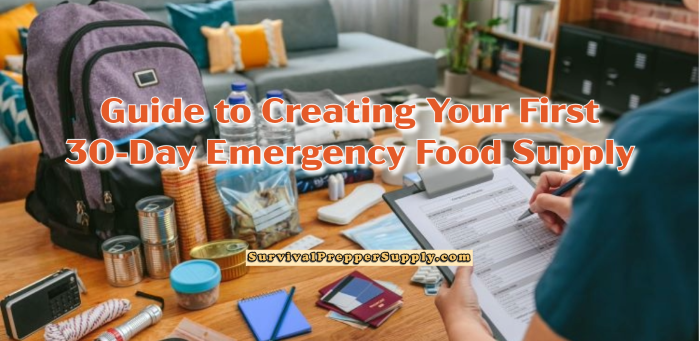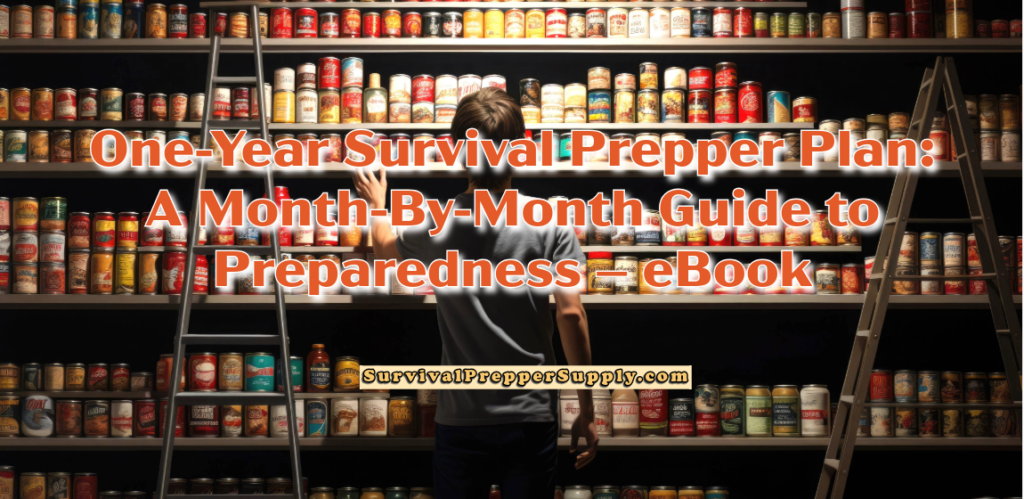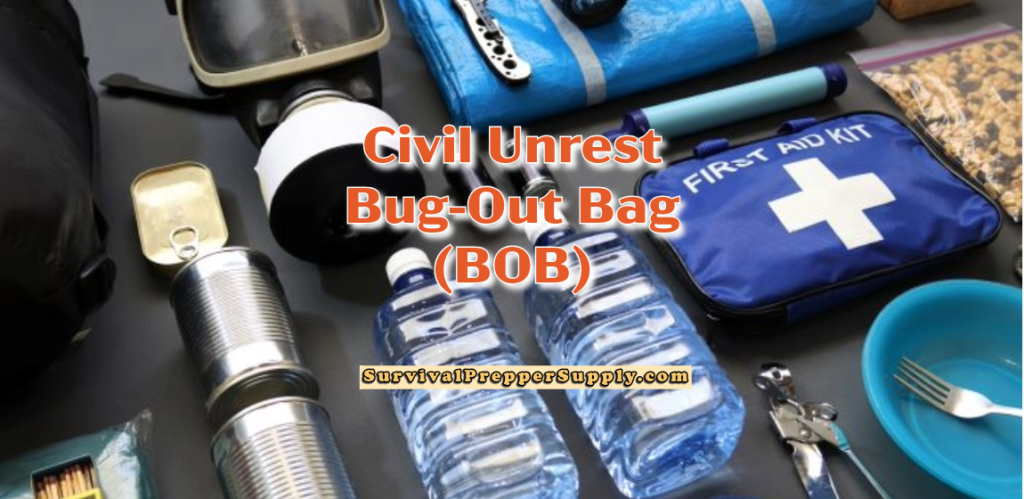Micro movable homesteads are on the rise for survival prepping, as are

Architecture, Domestic, Landscape gardening,
New York: Munn and Co, Smithsonian Libraries
The accumulation of things to fill these homes is unprecedented. While this might seem like the good life, part of the American dream, there’s a downside, and it’s not pretty.
You can become trapped by your home surrounded by material things that – instead of making you happy or making life easier – are causing you to work harder to keep up.
And if you decide that you’d like to relocate, you could be out of luck because selling your home all depends on the housing market. There is a better option for a life that gives you a taste of what it can truly mean to live happily and free from the rat race.
It’s also a great option for those who want to build a survival home in the event of an emergency, so whatever your reasons are, a micro homestead could be the answer for you.
A great article from The Penney Hoarder – How Much Does It Actually Cost to Live Off the Grid?
What Are Micro Homesteads?
Think small, manageable, and efficient when you think about micro homesteads. Think about freedom from stress and the assurance that you can provide all you need for yourself.
Micro homesteads are all about self-sufficiency. These are homesteads that really cut all of the excess material possessions out. People who choose micro homesteading have very small homes.
Many of these homes are complete at no bigger than the size of a tiny bedroom like you’d find in a regular home. You get all the rooms in one living space: bedroom, kitchen, dining room, and a small space for a bathroom.
What’s great about this kind of living is that not only does it free you up from being owned by your possessions, but these homes are very affordable. The ability to own one of these homes can be as cheap as the cost of just a down payment on a big home.
And best of all with these micro homes, you’re not stuck anywhere. Not ever. These homes are portable – so when you want to go live somewhere else, you simply make sure any breakables in the home are secure and off you go.
Please note that this post contains affiliate links, meaning I will get a small commission for qualifying purchases at no extra cost to the buyer.

trib.al
You aren’t tied to the grid in any way. You’re completely self-sufficient because your home and your way of life are self-sustaining. When you use a tiny home, you can create a micro homestead.
Using just a small portion of land where you’ve placed your home, you can plant crops serving all your food needs. By using nutrient-density planting, you can plan not only food for yourself, but even have some left over if you want to share it or sell it.
Some micro homesteaders also raise chickens for the use of eggs. Micro homesteads allow those who live this way to live from what the earth can provide. They can plant crops and harvest them, then use them in canning and other healthy ways of eating.
How to Design or Build a Micro Homestead
When it comes to designing or building a micro homestead, you can have virtually anything that you want. If you’re handy with creating things, you can build one yourself by plans that you find online, or through using planning books you can borrow or buy.

Joshua Kroetsch
The cost of the plans will vary in price, depending on where you get the plans. If you’re not that good at handling a hammer and nails or knowing how to fit things together to create a micro homestead, then you can hire someone to build it for you.
The cost of the endeavor will depend on what you want – such as the style of home you choose and what you want in it. Remember that when you design or buy the home, you want it made so that the space is used in a way that’s functional and makes the most of every square foot.
Looking at today’s traditional homes, you’ll notice a lot of wasted space. Taking advantage of space is one of the reasons that micro homes are so efficient.
There are some pre-made micro homes from some designers that aren’t that expensive. When you add custom touches, you can expect to pay somewhere between 15k to 20k.
While that might take some people aback at shelling out that much money upfront, all you have to do is compare that to what it costs to live in a traditional home that will take between 15 and 30 years of your life to pay for.

craft-mart.com
The trailer-designed micro homesteads are some of the most popular versions. These can be designed to fit with or without a porch, with dormer windows, and in various outer wall materials and colors.
They can have some pretty amazing amenities, too, for such a small living space. You build a trailer home or have one made that features beautiful hardwood flooring, propane fireplaces, and plenty of storage.
Every available inch is designed to maximize space, making these homes feel larger and more comfortable. Some of the tricks of the trade with this style micro home include not closing in the area under a set of stairs that lead to loft bedrooms, but rather leaving it open to use it as a closet for clothing and shoes. Using things like a composting toilet can save money as well as make this kind of home self-sufficient.
These homes vary in size but can easily be moved from one parcel of land to another by simply pulling the home with a truck.
Log cabin micro homesteads are also very popular. These homes can vary in wall thickness. To ensure that your living space stays warm in the winter and cool in the summer, you’ll want to build or have one made that allows insulation to be placed in the walls.

Insulation is not a given in any micro home, so you’ll have to cover that yourself or make it a stipulation when it’s built. These can be built with single or double loft bedrooms and can be built from a kit.
But these can also be built using logs from your land. You can choose to use an area where the growth needs thinning. Once you choose the logs, you’ll have to strip off the bark for the logs to be usable as walls for your structure.

After you gather your materials, you’re ready to draw up your plans or have them designed for you. Building a log cabin micro home is probably one of the cheaper routes to go because using materials from nature can keep the cost down. A log cabin micro home can be built for between $500 to $1,000 if you keep the design simple.
Find out how to build the sturdiest, cheapest, and most ecological house ever using shipping containers.
The Most Complete Guide for Beginners with Amazing Ideas, Plans, and Designs
Find out how to build the sturdiest, cheapest, and most ecological house ever using shipping containers.
Shipping container homes are the solution to get a home owned at 50% less than the normal price, be ecological, and have all the comforts you could dream of…
- How do I choose the right location for my new home without being accused of building abuse?
- How can I guarantee an optimal temperature inside so as not to live in an oven in the summer and in a freezer in the winter?
- How can I have access to water for long, hot showers?
- How can I make the house sturdy enough to withstand the worst tornado?
Shipping containers can also be used for microhomesteading. You can purchase these from the shipping company at reasonable rates. When a container gets dinged in shipping, it can be perfectly usable for homesteading, but not fit the qualifications most shipping companies have in place. So you can get a bargain.
Building a comfortable home with just over 100 square feet of space is feasible. Shipping containers have some height to them, which can you use to add touches like a loft bedroom or even a skylight.
Drywall can be added to the container home, along with carpet or hardwood flooring. Levels can be created inside the home with small portable steps that lead from one level to the next.
These homes listed can have electricity or be powered by solar panels for a complete living-off-the-grid lifestyle.
Inside this book, you’ll find some of the best strategies and rules you must follow to build a solar system by yourself, without worrying about complicated maintenance, unpleasant designs, difficult installation, or running out of power whenever you need it. These strategies and techniques apply to just about any vehicle or home, including vans, boats, RVs, little homes, and many more!
A solar energy system is the best thing to happen to you, and I am not exaggerating. Think about it: you will have clean, powerful, and FREE energy.
You will think that it is impossible, that you will need to rely on installation services from expensive companies, or that although you will stop paying for electricity consumption, you will spend the rest of your life paying for the system.
The best solution you have is to do your installation. And is it something difficult?
With this book, you will realize that it is not difficult. It is possible. You will have a step-by-step guide to completing the installation of a unique solar power system in your home.
Enjoy the benefits of a solar energy system in your home!
The Pros of a Micro Homestead
You’ll find an abundance of pros when it comes to living on a micro homestead. First, you’ll end up with more space to use for gardening to grow food that enables you to live off the land.
No more worrying about getting to the grocery store and paying those expensive prices. You’ll be able to grow the food that you need not only for your current use, but you’ll be able to set aside and can food for the months that your garden isn’t growing.
Maybe your well has been contaminated, or it may not support you and your family within a few short years. Have you always dreamed of harvesting rainwater for your home, garden, and livestock, but you feel overwhelmed and confused?
May 2022
Do you and your family want clean, unchlorinated water? But will a well cost you $20,000, bringing your homestead dreams to a screeching halt?
Maybe your well has been contaminated or may not support you and your family within a few years. Have you always dreamed of harvesting rainwater for your home, garden, and livestock, but feel overwhelmed and confused?
If you're looking for a step-by-step blueprint to bring rain to your homestead quickly, cheaply, and easily, this book was created just for you.
Created to demystify and simplify the process, especially for beginners, this complete stress-free blueprint to building an above-ground, dry rainwater harvesting system in just 9 days or less reveals how you can easily collect pure, clean rainwater with minimal time, budget, and hassle. No prior experience necessary.
By living on a micro homestead, you can live a sustainable life through your efforts if you create a balance between what you can grow and what you can’t. Having animals such as chickens or other small animals, you can create a cycle of homesteading that will meet your needs.
Micro homesteading allows you to have more land room to practice crop rotation. This lets you have unused areas to continually produce good food crops.
When you homestead, look for land that gives you access to fresh water off the grid or allows you to have the room to set up a rainwater collection system. This system will provide you with the water you need to take care of the crops, your own water needs, and any animals you might have, yet still keep you off the grid.
Mini Farming: Self-Sufficiency on 1/4 Acre. Mini Farming describes a holistic approach to small-area farming that will show you how to produce 85 percent of an average family’s food on just a quarter acre—and earn $10,000 in cash annually while spending less than half the time that an ordinary job would require.
Go back to basics—composting, raising chickens, water and irrigation, dealing with pests, and much more—with this unique, full-color bestseller (over 400,000 sold).
Mini Farming describes a holistic approach to small-area farming that will show you how to produce 85 percent of an average family’s food on just a quarter acre—and earn $10,000 in cash annually while spending less than half the time that an ordinary job would require.
Even if you have never been a farmer or a gardener, this book covers everything you need to know to get started:
- Buying and saving seeds
- Starting seedlings
- Establishing raised beds
- Soil fertility practices
- Composting
- Dealing with pest and disease problems
- Crop rotation
- Selling your produce, arm planning, and much more.
With a micro homestead, you can work the land you live on to make it produce for you. But you don’t have to have this option. You can also work on rented land.
There are many instances where people own land and need it farmed by someone else. By setting up on rented land, you can use your portion of the crops to feed your needs without having the high cost of buying land.
Living on rented land allows you to move on if you want to live in another state. Homesteading this way gives you a comfortable place to stay. Plus, it’s an inexpensive lifestyle.
You won’t be burdened with utility bills or other cost of living bills that hang on to other people. Micro homesteading is minimalist living that, instead of chasing a life, allows you to live one.
The Cons of a Micro Homestead
Minimalistic living isn’t for everyone, regardless of how much they might want the lifestyle. Larger families can find this type of living very difficult and trying on their relationships because there’s not enough room for everyone to have a space for some privacy.
But it can also be rough on smaller families that don’t like the lifestyle that calls for letting go of some material possessions. Living in a micro home can require adjusting the living space layout.
For example, if your kitchen area has a fold-away table and you need the space to double as an office, shifting things around can get trying when you’re in a hurry or tired.
You won’t be able to keep the amount of things you once had that you feel made your life easier. There won’t be room to keep all the cooking utensils or a variety of other kitchen items that you may have been used to.
Some people can go through a short adjustment period and end up liking the micro-living. Others can’t take feeling more confined once they downsize. Not having room for entertaining or guests to sleep over can be a problem for some people.
Also, extended family members might oppose micro-living, which can lead to family tensions if they’re vocal about it. Depending on where you place your micro home, you may feel that you live too far away from the amenities you’re used to.
While micro homesteading can be a peaceful, self-sustaining way of living, it’s simply not a good fit for everyone.
Why Use a Micro Homestead?
The world is poised for a financial breakdown and for food shortage. Water shortages are already going on right now in various states. There are rolling blackouts in some states because the electric grid can’t keep up with the demand.
These are all warning signs that the collapse of the kind of life everyone is used to living isn’t far off. For people who rely on the grid to make it through their day to day lives, a collapse is going to throw them into a tailspin of incredible stress.
The End Of The World As We Know It (TEOTWAWKI) is not just a doom-and-gloom prophecy — it’s a very likely possibility. Are you prepared for what’s coming? In just the past few years, the world has faced natural disasters, pandemics, war, major power outages, and economic instability… and many more are going to happen in the coming years. It’s only a matter of time before a disaster situation hits close to home… GREAT CONSISE SHTF BOOK.
10-Step Guide to Filter Water, Store Food, Stockpile Medicine, and Create a Disaster-Ready Home to Be Prepared for Any Suburban SHTF Scenario
But for people who use a micro homestead, regardless of what happens or doesn’t happen in any other state or all over the world, life will still continue to go on peacefully.
And if they don’t like the condition of the state that they’re living in, they can simply move to another area. Because they’re already used to providing for their own needs, they’ll be able to continue to grow and harvest their own food.
They’ll continue to be able to eat even when the nation’s food supplies dwindle. When the electric grids begin to crash one by one without any timeline of when or even if they may be back up and operational, people who live in a micro homestead won’t have that same worry.
Because they use self sustaining means to take care of their electric needs, they’ll be able to keep on doing what they need to do. When water supplies become dysfunctional, this won’t impact those who practice micro homesteading.
It won’t impact them because they’re already used to fending for themselves with the water supply. They have rain barrels set up to take care of their water needs. Or they use a fresh supply of water from the land.
As sewer systems fail and garbage can’t be hauled away, those who live on the grid will find that life has become not only unpleasant and also very unsanitary.
Those who have a micro homesteading lifestyle won’t even feel the ripple from that. They’ll be able to go to bed and sleep without worry, then rise the next morning and do what they’ve been used to doing. Enjoying life.
I’m the daughter of 2 original survivalists who moved from the north to sunny Florida. My mother, along with her parents, bought 30 mostly uncleared acres in 1938. The first home was made of pecky-cypress and built by a house-raising. My mother raised 10,000 chickens.
My divorced mother met and married my father in 1948. From pine trees on our property, he hand-built a log cabin. He also built a tarpaper-lined 65’x45′ pool with duck pond overflow. We had an artesian well for our water and powering our hand-built waterwheel for the pool. He built a substantial cantilevered roof workshop with a car pit in the massive cement floor.
Since my early teens, I have read a ton of books about survival, prepping, the bomb, an apocalypse, homestead living, and SHTF situations. As an adult, I continue to read sci-fi, survival prepping, and science. I practice a prepper lifestyle albeit a bit modified, read a lot, buy a lot, pack/store a lot of anything survival related.
Read my About Me post for more details on our self-sufficient living. I lived there until I went to college in 1968.
My SurvivalPrepperSupply.com blog strives to educate individuals on coping with natural and human-caused disasters using article posts about preparing for emergencies.
